According to William I. Robinson, the COVID pandemic has further intensified the structural crisis of global capitalism and has caused numerous uprisings and revolts around the world, which global elites are trying to suppress via militarization, police repression, and surveillance. Robinson joins Greg Wilpert on theAnalysis.news.
Greg Wilpert
Welcome to theAnalysis.news. I’m Greg Wilpert. Today we’re going to take a truly big picture look at the state of the world based on two recently released books by the sociologist William I. Robinson. The two books are called Global Civil War: Capitalism Post-Pandemic, published earlier this year by PM Press. The other is Can Global Capitalism Endure?, published by Clarity Press just very recently. The two books overlap to some extent, which is why we will discuss them together. They provide an overview of the state of global capitalism, the multiple crises that it is causing, its origins, its consequences, and the resistance to it.
William I. Robinson is a distinguished professor of sociology and international studies at the University of California, Santa Barbara. He is the author of numerous books on Latin America and globalization, such as The Global Police State: A Theory of Global Capitalism, amongst many others. Thanks for joining me today, William.
William I. Robinson
Thank you so much, Greg, for having me on. It’s a pleasure.
Greg Wilpert
I find it a little bit tricky to discuss your books sometimes because they analyze global capitalism as a system. Whenever you look at something from a systemic or holistic perspective, you quickly find that to understand any of the elements of a system, you need to understand the other elements, too, in order for it all to make sense and how it fits together. Having said that, we’ll see a little bit about how this works.
Let’s start with the way you start in both of your recently released books, that is, with the explanation of the global structural crisis that capitalism currently finds itself in. You characterize this crisis as a crisis of over-accumulation and stagnation, among other things, of course. If we look at that over accumulation and stagnation, to some extent, that is the explanation that many Marxists would give for a typical cyclical crisis in capitalism. How is it that this time around, you would say that it is a structural crisis, and why did it begin, which you say, in your book, was in 2008?
William I. Robinson
Sure. Well, first, let me say that it is a deep, deep structural crisis of global capitalism. As you pointed out in the introduction, we can’t separate that structural dimension from the other dimensions of crisis. It’s also a political crisis of state legitimacy and of capitalist hegemony. It’s a social crisis of social reproduction in the sense that, at this point, 80% of humanity faces a daily struggle for survival, and that survival is not even certain. Of course, it’s an ecological crisis. All of these four dimensions are intertwined, but you’re asking about the structural dimension.
In radical political economy, when we speak about three types of crisis, you just mentioned the first one, which is cyclical. These are periodic recessions. They come about every ten years, almost like clockwork. Since we’ve had data going back to the early 1820s, we see, every ten years or so, a cyclical crisis. In fact, we’re on the verge right now. We actually are, by definition, in recession in the United States and worldwide as a cyclical crisis. Yes, I’m talking about something much deeper, which I refer to as a structural crisis, meaning that the only way out of this crisis is to radically restructure how capitalism is organized.
These are types of crises that we see every 40 to 50 years. The last big structural crisis was in the 1970s, and that was resolved. When I say resolved, I don’t mean resolved for the majority of humanity, but resolved for the system through globalization, through capitalist globalization, and the neo-liberal counter-revolution. Prior to that, we had this big structural crisis of the 1930s that was resolved by a switch to welfare capitalism, New Deal capitalism, and social democratic capitalism.
I’ll just take us back to one more historic period. Previous to that, the giant structural crisis was the late 1870s to the early 1890s. That was actually the first Great Depression. That structural crisis was resolved by a new wave of colonialism and imperialism. Of course, late in that century, or early in the new century, Vladimir Lenin writes his famous book Imperialism, the Highest Stage of Capitalism.
We have these bigger crises which are structural every 40 to 50 years. Each time the system has managed to survive and move forward by radical restructuring. I’m suggesting that the new structural crisis begins with the financial collapse of 2008. We are still in it. It hasn’t been resolved at all. Of course, part of the argument in both of these books, but especially the first of them, the Global Civil War, is that the ruling groups are hoping that digitalization, these radical new rounds of digital transformation, will lift the global capitalist economy out of a structural crisis.
I do want to conclude with one other point here, and that is that there’s a third type of crisis that I characterize as systemic. What I mean by that is that even if you restructure the system, you won’t get out of this crisis. The only way to resolve this crisis for humanity is to move beyond the system itself, that is, to move beyond capitalism. You’ve, of course, read both books in preparation for this interview, and you know that I’m arguing that within global capitalism, there could be a radical restructuring that prolongs the life of the system for a number of decades. Ultimately, and certainly by the end of this century, either we will have overthrown capitalism, or we will face complete collapse and demise of civilization.
Greg Wilpert
Now, one of the components of this crisis that you mentioned, the structural crisis, is the predominant role that financial capital has come to play and that it’s really something that’s parasitic on the real economy, which actually reminds me also of a term that I think it was Matt Taibbi once used to describe Goldman Sachs— as the vampire squid on the face of humanity. Can you talk a little bit about how finance capital fits into this and why it is parasitic to the real economy?
William I. Robinson
Sure, fantastic question, and really important because this gets to the very heart of what’s going on in the global economy and in this crisis. There are two things we want to think about here. The first is that the logic of capitalism is that investment is going to take place where you’re going to assume there’s going to be a good profit. Capitalists will invest in a productive economy. That is the real economy of goods and services, in houses, in computers, in health care, education, food, and so forth. They will invest in those things not because they meet social or human needs but because they’re going to be profitable.
We had since the late 1980s a secular decline in the rate of profits. Now, this is a hardcore Marxist economy that, by definition, as capitalism develops, the profit is, the technical term is, a tendency for the rate of profit to fall. We know why it falls, and this is linked to the issue of digitalization. I’ll come back to that in just a minute, digitalization. We have documented, and of course, as mentioned in the second of those two books, Can Global Capitalism Endure? that the rate of profit was 15% in the 1970s. That went down to 10% by the turn of the century and then 6% currently. That is in the productive economy. If you’re a capitalist, you’re not going to invest in the real economy.
What are you going to do? You accumulate all of this capital, and you don’t know where to invest it. That’s why we call it an overaccumulation crisis. You’ve accumulated all this capital, and it becomes stagnant because you won’t reinvest in productive reactivation because you won’t anticipate a good profit. This is where financial speculation comes in. The transnational capitalist class has accumulated enormous amounts of capital, of cash, and they have been investing it for the last, especially since 2008, but even before then, in the global casino, in financial speculation of every single type. The data is so revealing that I mentioned it in both of the books. The real economy of goods and services upon which we all depend and we all live in that economy is valued worldwide at $75 trillion annually. Whereas financial speculation, just in derivatives and a derivative is financial speculation, an instrument of financial speculation, is $1 quadrillion. It’s unfathomable this gap between the real economy in which we live and the financial speculation. That’s one part of my response to your question.
The other thing I want to say here is that there are three things that are driving forward the crisis and also driving forward everything taking place in the world: this triple process of globalization, financialization, and digitalization. Part of the transformation of the recent decades, and again, especially since 2008, I want to keep on emphasizing that because during deep structural crises, things change and develop very rapidly. Very often, we can’t even keep up our analysis of how quickly things are changing. What’s happened is that finance post-2008 is in a whole new ballpark. I’m a sociologist. I think even the best Marxist economists or mainstream economists can’t even get their minds around this financialization. One is this enormous gulf between financial speculation and the accumulation of what we call fictitious capital and the real economy. I know I’m going into a little technical detail, but what I mean by fictitious capital is that you print money, but that capital is not backed by real goods and services in the real economy. I gave the example of real goods and services and derivatives as fictitious capital.
What’s happened here is with the 2008 financial collapse, we moved into a period called quantitative easing in which the U.S. Federal Reserve, the treasury, and the other leading industrialized countries in Western Europe just started printing massive amounts of money to respond to the crisis and the collapse. They threw that money out there, delivering it to banks and corporations. What did the banks and corporations do with this program of quantitative easing? Here we’re talking about how the U.S. government spent about $15 trillion after 2008 in quantitative easing, just printing money and throwing it out. Worldwide, there are some $35 trillion. That’s almost half of the whole global economy. This money that’s not backed by real goods and services they delivered to the banks. What did the banks do? They delivered it to the transnational capitalist class. They didn’t invest it in productive reactivation. They invested it in more and more financial speculation. With COVID, you have a new round of several tens of trillions of dollars worldwide just printing money and throwing it out there. That’s part of the story of stagflation that we’re facing right now, stagnation together with inflation.
I want to conclude my response, and again, we could spend a whole hour just on this issue of financialization. There is something else going on, and it is that once you get this extreme digitalization and all the national financial systems in the world are integrated into a single global financial system through computerization and digitalization, finance can zip around the world. It can land in one place for a second, relocate to another place, combine, disintegrate, and recombine. Finance detaches itself in a way we’ve never seen in the 500-year history of capitalism. It’s completely detached from the real economy. We’re in a new ball game here. We can barely get our grip around it. I can continue talking, but I think for the moment, I’ll just pause with that.
Greg Wilpert
Yeah, I want to touch on two things you mentioned just now. The main one is the role of the pandemic. I mean, first of all, you say that this structural crisis started, so to speak, in the 2008 global financial crisis. It lasts until now, until the present day. That’s about 14 years. That’s a pretty long time to be stuck in a crisis. Of course, in that time period, we even had some economic growth. I just want you to clarify exactly why, even in a period of growth, you would characterize this as being still in a crisis, structural crisis. The other question is, how is the pandemic affecting these dynamics of financialization? You mentioned already that it provoked a huge new inflow of cash through quantitative easing, but then there’s also the digital component. If you could talk about that and how that has impacted it.
William I. Robinson
Sure, and that’s an integral part of the whole story here. We want to remember something. Let’s go back for a moment to the last two structural crises. The key turning point is 1972 and the previous one. In 1971 and ’72, those years, [Richard] Nixon took the U.S. off the gold standard, and there was a collapse of the gold standard. He did that because the economy was entering a period of stagnation, and there were other things going on. I won’t go into it here. It’s throughout the entire 1970s that there was this structural crisis. You might have a spurt of growth, then you have stagnation, and then you have a little recession, but the largest structural story goes from ’71-72 right up until the mid-1980s when you start having the globalization boom of the late 1980s and the 1990s.
Prior to that, in the 1930s, remember, the stock market collapsed in 1929. The world doesn’t get out of that structural crisis until World War II. It’s eventually just a war that resolves that structural crisis. It’s not surprising to say that we’ve been 14 years in a structural crisis. That’s not unusual. Again, we’ve seen historically that the structural crisis is resolved by a radical restructuring of the system. It functions in new ways, has new institutional mechanisms, and so forth. We haven’t gotten there.
Let’s talk about the pandemic for a minute. That’s a big theme of the first of the two books. A few months ago, it came out— Global Civil War: Capitalism Post-Pandemic. There are a number of things going on with the pandemic. I hope we’ll get into the discussion on the global revolt and all of that, but the economic side of the pandemic is that these new technologies start to come online in the 2010s. Here we’re talking about these absolutely radical new technologies. My people call it the fourth Industrial Revolution or the second Information Age. Here we’re talking about artificial intelligence, machine learning, big data, the collection, processing, and analysis of massive amounts of data, every single thing taking place on the planet. We’re talking about robotization, 3D printing, autonomously driven land, air, and sea vehicles, virtual reality and augmented reality, new forms of energy storage, nanotechnology, and biotechnology that play a key role in the pandemic, quantum, and cloud computing. This goes on and on.
All of these new technologies and the technology started to be introduced in the 2010s. It’s really the pandemic that turbocharged the introduction and the expansion of these new technologies. Think of how we suddenly, as a professor, we’re suddenly teaching online through zoom. Think also of the vaccines. As controversial as this technology, vaccine technology is, that’s the fruit of biotechnology, radical new biotechnological developments in biotechnology. The pandemic turbocharges this radical digital restructure, and that also has political and social dimensions.
One of the things that I’m emphasizing in both of the books, especially the first of those two, is how it placed on center stage a new block of transnational capital. Silicon Valley moves now to the center. Silicon Valley, metaphorically, because there are different Silicon Valleys around the world. The big tech companies move to the very core of the global economy, and they are fused with the global financial conglomerates which invest in them and provide credit. It’s also fused with the military-industrial complex.
I developed in both of these books this argument. You have a triangulated new block of capital— the military-industrial capital. The Pentagon, Wall Street, and Silicon Valley all come together, and all of that is around the pandemic and the response to the pandemic.
Now, I’ll throw this out for a minute, and you can decide if we go in that direction or if we rather continue to elaborate on the structural dimension of crisis. Remember that part of this whole story of crisis is a crisis of social disintegration and a crisis of survival. We’ve spoken about this the last time you interviewed me, Greg, that as we speak, 1% of humanity controls over 52% of the world’s wealth. Twenty percent of humanity is decreasing, and 20% controls 95% of the world’s wealth. Eighty percent of humanity has to make do with just 5% of the world’s wealth. Under these conditions of extreme inequality generates enormous social and political tensions, and it is fueling this massive global revolt, which is simply unprecedented.
For the book Global Civil War, I went into detail on this global revolt. The reason I’m mentioning that is that the ruling classes, therefore, have a dual challenge. The one challenge is how you respond to chronic stagnation. Even when you have spurts of growth, as you mentioned, the long-term trend is stagnation. How do you respond to that economically, structurally, and keep profit-making going? The second big challenge is what the ruling groups have. How do you maintain transnational social control? How do you keep a lid on this global revolt? It’s there where digital technologies also come into play.
My prior book, which you interviewed me on a few years back, the Global Police State, showed how these technologies are applied to systems of warfare, social control, and repression around the world and is really bringing us to this global police state. We wouldn’t have this acute global police state without these new technologies that make it possible.
Greg Wilpert
Of course, I definitely want to get into the issue of the legitimation crisis, where it’s coming from, and where it’s going. Before we do that, there’s another crucial element to your approach, which is to question, or not even question, to undermine the idea that there are different capitalist classes, national capitalist classes, fighting it out against each other, which is a common way of seeing the world, especially when you look at the conflicts that you see between the U.S. and China. Let’s say U.S. and Russia. It looks like the U.S. is fighting for U.S. capital, China is fighting for Chinese capital, Russia is fighting for Russia, etc. One of your main arguments is that there is an integrated transnational capitalist class. Now, where’s the evidence for that? Then we’ll get into how that then plays itself out in these war and peace issues. First, where’s the evidence for this integrated transaction process?
William I. Robinson
Okay, so I’m going to flip around the question. The question should be, where is the evidence that capital is still organized nationally? There is no evidence. That’s the simple answer. Let me say that these new books, of course, deal with the crisis, the pandemic, and this new round of digitalization. Still, prior to that, I’ve been writing about globalization and developing the theory of global capitalism, really since the late 1990s. In my earlier books, I’ve massively presented massive, overwhelming evidence of how the leading sectors of capital all around the world have transnationally integrated. They’ve transnationally cross-invested, cross penetrated so that you can’t separate out all the big chunks of transnational capital into these national boxes.
My critics and I have more critics. I have a lot of people that support us and research in this area, but my critics are probably more numerous. If you look across the board, across the board, their criticism is theoretically in the air. They say that’s not true, and Lenin said this 100 years ago. They’ve never presented counter-evidence to show that the giant transnational corporations and financial conglomerates that drive the whole global economy, that lie behind political power everywhere, are still organized into national boxes.
On the contrary, I’ve shown the reverse, even in Global Civil War. Not the other one, the new one, Can Global Capitalism Endure? I just cited the earlier works. Even there, I’ve shown it. I’ve shown it in actual hardcore systematic evidence.
Now, I’m a social scientist. No social scientist can make a knowledge claim without having it backed by empirical evidence. Not just social scientists, journalists, or anyone thinking about the world. I can tell you that the clouds look to me like cotton floating in the air, but empirical evidence tells us that it’s water vapor. Here it might look to us on the surface that national capital is competing with one another, but we have to dig up the empirical evidence, and we see that it is actually transnational capital. The level of integration is phenomenal and unprecedented in the 21st century. That does lead to the question, then how do we explain the nuclear war? How do we explain the U.S.-China rivalry? That’s real; that’s not fake. That rivalry is real, and it is dangerous. It could lead us towards World War III, but it has other explanations, not the explanation that there’s a Chinese capital and U.S. capital, and they’re competing for markets and influence around the world. That is empirically 100% false. I don’t know if you’d like me to get into that. How do we explain these conflicts?
Greg Wilpert
Yeah, I definitely do. Before that, one of the interesting points I thought that you made is that you do say that there is still competition within the TCC, the Transnational Capitalist Class, which I find an important point to make because many of your critics will skip over that and will just look at this integration and supposed lack of competition. Then you make the further point that they are united; that is, the transnational capitalist class is united in its interest in keeping neoliberalism and keeping the capitalist system with open markets in place. Now, this, of course, raises the other issue, and this comes to the question of the global revolt. First, what role does the nation-state still play in all of this? Why even bother with national states in that sense?
William I. Robinson
Sure, the first thing is that I’ve always emphasized this. Again, I know this is kind of extraneous to the interview, but my critics, my severe critics, never respond, not just when I show the evidence, but I respond to their criticism, and then they continue with the same criticism. Endlessly it’s been said that I think the nation-state has ended. Nonsense, absolute nonsense. Endlessly they say that I claim there’s a monolithic transnational capital class that agrees on everything. I’ve never said anything of the sort. In fact, I’ve always emphasized that there’s complete disunity, fishers competition, rivalry, and conflict within the ranks of transnational capital, the transnational capitalist class.
As you pointed out, there are only two points of unity. One point of unity is the transnational capitalist class is united around wanting an open global economy where they can have access to the world’s resources and exploitation of labor. The other point of unity is they want social control and repression to contain the popular and the working classes. Beyond that, there’s no unity. One of the things that are intrinsic to capitalism, it’s what makes capitalism, capitalism, is competition among capitals. That competition is fierce. It’s all over the world. How are transnational clusters competing with other transnational clusters? That’s what we see when we look at capitalist competition around the world.
Now you’re asking the key question of how do states fit in here? We have a contradiction in global capitalism that we have a globalizing economy and globalizing capital, which is integrating across borders. This unfolds within a nation-state-based system of political authority. You have these 200 nation states and each government, each national state, like the U.S. state, the Chinese state, the Russian state, and the Brazilian state, besides the fact that they have a certain political autonomy, even while their capitals are transnationalizing, they have political autonomy. The nation-state, it’s a little theoretical, but it’s important and has a contradictory mandate. If you’re the U.S. nation-state or those that govern and control the U.S. nation-state, you have to attract transnational capital to your territory. You have to have investment take place. You have to have, economically inside your borders, you have to stimulate economic growth and capital accumulation. That’s your accumulation function as a state. Your other function is to achieve legitimacy, your legitimation function, you have to achieve internal legitimacy and harmony and keep a lid on revolt or revolution. I guarantee that at least enough of the population is able to reproduce itself for society not to collapse. That legitimacy function of the state is in contradiction with the accumulation function.
That sounds technical, but I simply mean this. If you’re the U.S. state or whatever state you are, you have to reduce salaries, you have to make the workers competitive by pushing their salaries down on precarious work. You have to give tax breaks, you have to give and lift environmental regulations, and you have to do all these things to please capital so they will invest in your national territory and accumulate inside your national territory. By doing all of those things, you heighten inequality, you heighten precariousness, you heighten struggles for survival among the masses, and therefore you aggravate the legitimacy prices.
Part of the story here is that states have to externalize these internal or domestic political tensions and crises. Now you externalize them in two different ways, among others. One, you externalize it, and you create external enemies when there are none. You see the U.S. state doing this. First, it was terrorism. It was the external enemy to channel all of that internal tension. Then it was— I don’t even know what came after terrorism, but that eventually didn’t do the trick. Now it’s China. The boogeyman of China, Russia, and Putin. There’s always some external enemy that’s conjured up. During the Cold War, it was the threat of communism. You externalize those tensions.
The other big way that you try and resolve those internal tensions is by scapegoating. Of course, you have Trump with the scapegoating of immigrants who are rapists and murderers. That’s the role of racism and many different forms of scapegoating. Anyway, to summarize and not go into a lot of detail here, is that there are numerous ways to analyze what is driving this intense interstate competition that is not in contradiction with the empirical evidence that shows that it is not national corporations in the U.S. in competition with national corporations in other countries.
Greg Wilpert
That brings us to the next issue, which is the global revolts that had been taking place in the wake of the 2008 crisis and just before the pandemic. Talk about those. What were they reacting to exactly? You mentioned some of the elements already. How did the national state and also global capital react to and respond to those challenges?
William I. Robinson
Obviously, as long as there’s inequality, there’s always going to be a revolt from below. I mean, over 500 years, 8000 years of class society. Let’s start the story with 2008. The financial collapse of 2008 heightened the struggle for the daily survival of the vast majority of humanity. After 2008, you get Occupy Wall Street in the United States and other mass movements in the United States, this burst of struggles. You get all over the world, the global world, the Arab Spring, new rounds of turns to the Left in Latin America, and uprisings in Thailand. It is all over the world right after 2008. It’s a period of mass struggle. Then it dies down a little bit, but when you look throughout the 2010s, it never disappears. It’s still increasing and increasing. Let me just grab a piece of paper here with some actual data. It’s hard to memorize all of this data, so I won’t be able to find it now.
The Carnegie Endowment for International Peace has what they call the global protest tracker. They show that the intensity and widespread protests throughout the 2010s were escalating. They reach a climax from 2017 to 2019 in which there is, again, I don’t have the— the data is written in the two books. It’s something like 250 mass uprisings all around the world that overthrew no less than 35 governments in this period of 2017 to 2019.
Now let’s go back to the fall of 2019 and remember what was happening. The global revolt even took off more than it had been. You had a million people in the streets in Chile. That’s what brought the Left to power two years later in elections, or three years later. You had mass strikes and mass uprisings throughout Latin America, Colombia, and Ecuador, everywhere you went. Then you have it in Sudan, you have it in Lebanon, you have it in Iraq, you have it in Thailand, you have it everywhere you looked in the fall of 2019. I call that in the book ‘the people spring: fall 2019’. The only reason— and I want to mention India as a case example in just a second— the only reason it was temporarily put on hold is because of the pandemic.
The pandemic is a blessing in disguise for the ruling groups in two respects—the repo market, which is a crisis of debt and stagnation. I’m not going to run into technicalities or what the repo market is. That was about to crash in August, September, and October of 2019. We were headed for another 2008. The blessing in disguise of the pandemic was suddenly you have the state with a new round of quantitative easing, of printing trillions and trillions of dollars and preventing a collapse. That was the one blessing in disguise. The other one is when you declare all over the world a lockdown. Suddenly everyone had to leave the streets. If they were out in the streets, you have states used to legitimate repression, that is, in the interests of public health. That was squashed momentarily, but even then, the global revolt didn’t stop. For a few months, just for a few months, it went on hold. Then, of course, George Floyd is murdered here in the United States. Then you had May, June, and July; you had the biggest uprising in the entire history of the United States. Even in the midst of the pandemic, it once again continues the global revolt.
I want to mention the case of India because it is stunning. From December 2019 to January 2020, literally the eve of the pandemic, there’s a general strike in India of 150 million people. Now, think that through. The vast majority of countries in the world, that’s more than their entire population. This was the biggest labor mobilization in the history of the planet. That dies down, and then there’s a giant lockdown. By the way, I discussed it in the Global Civil War, the incredible repression of states by states of the popular movements and the uprisings and the working classes in the name of public health. Then fast forward one year later, from December 2020 to January 2021, another general strike in India, this time involving 250 million people. This blows your mind away. That would then suppress. The other one is the biggest labor popular mobilization in the history of the planet. This gives you an idea of the dimensions of this global revolt.
I titled the book Global Civil War because obviously, I don’t literally mean that there is a military on one side and from above and the military on the other side from below fighting a military, civil war. It’s obviously a metaphor for a larger story here in which all of these national struggles in the age of digitalized global capitalism and social media. We’re aware of all these national struggles that are increasing intersections of all these different national and regional struggles, which we can talk about later.
The global working class, with all its diversity, is squaring off against the transnational capitalist class and the states and ruling groups on the other side. We really are moving towards a situation of global civil war in the sense that prolonged permanent conflicts from below and from above are manifesting in so many different ways.
I’ll just conclude with one other point here. Of course, all of this mass discontent is in the Left and the popular groups who are organizing social movements, popular social movements organizing, and organizing this discontent into protest. There’s also the fascist Right and the far-right, which are similarly taking advantage of this crisis, this immiseration, and this insecurity to also try and organize a mass base, a fascist base. That, of course, is a big danger that I discussed in both of these books.
Greg Wilpert
Yeah, I want to get to that point as well, but just staying a little bit more on the topic of the existing revolt that had been happening, especially the ones that are more progressive, for lack of a better term. There seem to be two major problems that they had, or maybe even three I can think of. I think you talk about some of them. One of them is, first of all, the repression that happens against them to try to stop them. Then there are also problems internal to the movements, it seems. If you compare the 1930s, where you also have lots of protest movements, it was quite different for two reasons which seemed to be lacking in the current uprisings. One is that they were organized in the sense that you had a massive union movement that gave it coherence. You also had massive socialist parties organized. That leads to the other point, which is also that they had much more of a political direction and vision than the current ones, which is more of an inarticulate protest, it seems. I’m just wondering if you could say a little bit more about that, about why these current movements are failing in some ways, not just because of the repression but also because of these internal problems.
William I. Robinson
Sure. Yeah, in fact, chapter three of Global Civil War is dedicated to identifying what I term four quandaries of the global revolt, the four challenges. The first one of those four is what you’ve just touched on. We have this very tragic situation in which you have masses of people around the world organizing into powerful social movements of every kind. Yet an organized, socialist-oriented Left is, in many of these cases, lacking. You get spontaneous or even organized uprisings, but without an alternative project and an organized Left that can give coherence and replace what’s overthrown, you don’t get any progress forward.
The most tragic example of this was the one I used in the book Global Civil Wars in Egypt. You had the 2011 uprising given the [Hosni] Mubarak’s dictatorship. Now, it wasn’t spontaneous in the sense that social movements have been organized for years. The trade unions were organizing. So it’s organized, but at the level of social movements and workers’ organizations. They overthrow Mubarak, but because you don’t have a socialist Left and revolutionary parties linked to these mass movements to say, okay, now we’re going from a dictatorship, here’s an alternative political project, an alternative, we’re going to put our own people in government, then you simply have a new dictatorship a year later in Egypt.
The other example I use is the weak working-class movement, but I don’t want to go there for a moment. That’s the first big tragedy of this current moment that you have the mass social movements and worker organizations without, just as you say, an organized, coherent Left like we did in the 1930s. I’ll be real brief about this, but there are three other quandaries I mentioned. One, as I already mentioned, is the quandary that the Left has to compete with the far-right and the neo-fascist Right in recruiting the same social base. That’s the second quandary.
A third quandary is that increasingly, social movements, less in the United States but in other countries, social movements and worker organizations are acknowledging that you have to start organizing across borders. You have to link up across borders. You need transnational coordination. That’s been going on for quite some time. Of course, the World Social Forum was founded, I think, in 2001. The idea that we need to have a global project and transnational coordination has been gaining ground, but it’s still very much not where it needs to be. You still don’t have transnational organizations, the level of transnational coordination, and national struggles that we really need; that’s the third quadrant.
I’ll just conclude without going into a lot of detail, and I know this is very controversial, but we need to confront this head-on. In some countries, this is not true, for instance, in India or in the Philippines, but especially in the Western countries, and especially ground zero, the United States, we have what I critique as the identitarian paradigm. That doesn’t mean that we don’t place front and center struggles against racism, against sexual repression, and against women’s oppression. They have to be front and center in our struggles. The identitarian paradigm is something else that I and many others have critiqued, and that is the fourth quandary that in the Western countries is also blocking more radical forms of struggle that can turn this global revolt into a real challenge to the system.
Greg Wilpert
When you were saying that one of the quandaries is also fascism, I mean, that’s certainly something that also existed in the 1930s. I’m wondering what else is different in this period? One of the things that you mentioned was precisely the aspect of globalization, essentially, that the movements need to link up globally because of the global nature of capitalism and the transnational capitalist class. That’s another one. One that I didn’t hear you mention yet, but I did see in the book, is the issue of digitalization. Can you say a little bit about how that affects the global result?
William I. Robinson
Absolutely. On the first one, fascism is always— I’ve been writing about fascism since the 2008 collapse. I remember I got invited to several universities to talk about my theory of public capitalism. I brought up fascism. I’ve looked at raising everyone by fascism, and here we are on the doorsteps of fascism right here in the United States. Fascism has always been a response to the capitalist crisis.
In the 1930s, it was a response to the Great Depression and is now in the 2020s. The fascist project is a response to this crisis that we are in. The difference is that in the 1930s, of course, we had in Germany, in Italy, in the United States, and all of the countries around the world, you had mass uprisings of the Left. Where fascism triumphed, its first job was to crush the Left, and then its second job was to reactivate a capital accumulation with a fascist state organizing. In the United States, you had, as you just pointed out, a mass fascist movement. The mass populist struggles, socialists, and communists got the upper hand linked up with reformist elites, and we have the New Deal outcome, the social welfare outcome.
You have the same thing now. You have the Left response and the fascist response to this crisis. For me, the difference between the two fascisms is, just as you said, transnational capital. For me, a fascist project currently would involve a triangulation of three things you need to actually consolidate a project. First, you need a repressive fascist power within the state itself, capturing the state. You had that with Trump. He couldn’t consummate it, and he could come back. You have it with [Jair] Bolsonaro. They’re capturing the state and turning the state into a repressive, far-right, repressive apparatus of fascism. That’s not enough for fascism. That just means dictatorship or authoritarianism. The second and third things it has to triangulate; secondly, you need a fascist mobilization in civil society. You have that, of course, with the Nazis. You have it right now in the United States, not just with Trump, the Trumpist movement but the far-right militias, the QAnon, and all of that. We’re seeing a rapid fascist mobilization in civil society because fascism involves this mass base in civil society.
Then the third of the triangular fascist project to succeed is capital. In this case, it’s not the national capital. German national capital at first did not support the Nazis, and then they said, okay, wait for a second. Let’s do that because the Nazis will crush the socialists and communists, and the Nazis will subsidize and reactivate our own accumulation. You had that triangulation. Now the missing link here, even when fascists take over the state or even when they’re mobilizing in civil society, is transnational capital, by and large, is not on board with fascism. The ruling classes, and especially capitalist classes, are not yet on board, wanting to say, yes, we need fascism. If the global revolt from below comes to really threaten the interests of transnational capital, oh, they will run over to fascism and link up, and that’s our big danger here, of course.
The second part of the question was about the role of digitalization. I was mentioning earlier that these new digital technologies allow new forms of social control and repression. You probably would not see where the 21st-century fascist project, even here in the United States, you wouldn’t see concentration camps and mass murder of millions of people because there are other mechanisms of fascist control, more selective repression with very tight control through the digitalized police state. You would see a slightly different kind of fascist repression and control.
The other thing I want to say about these digital technologies is that they are also there for the popular classes to use. Digitalization is a weapon of the ruling groups. They’ve weaponized it literally and figuratively. The ruling groups have weaponized digitalization literally by applying it to a global police state and figuratively by the incredible amount of increasing the power of digital control through digitalization. It’s a double-edged sword for the ruling groups because the popular classes also used digital social media and all of these digital mechanisms to unify, which is to organize, which is no wonder the latest rebellion in the global revolt.
We had Panama a month ago. Of course, I can mention 20 different countries where there was a global revolt just in the last month, month and a half. Literally, today and yesterday, because it breaks out in every country, every day, is Sierra Leone. A mass uprising as we speak in Sierra Leone, West Africa. What is the first thing the state does? It cancels and turns off the internet because the internet will now be used by Sierra Leone people to start coordinating their struggle. Digitalization is a complex thing that is not always in the control of the ruling groups, and they know that.
Greg Wilpert
I want to turn a little bit towards the future. Now, you mentioned that the fascist tendency has severe problems. Then there’s also the kind of, so to speak, enlightened upper class, let’s say the transnational capitalist class that does not buy into fascism, that recognizes, as you say in your books, recognizes the problem of inequality. I would also say it’s not just inequality. I think it’s also this potential for this insecurity that’s driving a lot of people’s anxieties. I think the tolerance for inequality in the U.S. seems to be ridiculously high, but it’s the insecurity that gets to people. They recognize this and therefore propose a new New Deal, Green New Deal, post-Keynesian kind of solution to the problem or the crisis. Now you question whether that’s going to be a viable solution. Why?
William I. Robinson
Yes. Yeah, fantastic question and very important. Of course, again, these two books, the one that goes into a lot of detail on that is Can Global Capitalism Endure? I was talking earlier about how there is no unified global ruling class apart from their two elements of unity. They’re very divided now. Really, the global ruling classes are rudderless. They don’t know how to resolve this crisis. There is a reformist wing among the transnational elite. These are reformers who recognize that you need to save capitalism from itself by radical restructuring and a reform project. There are wings of the ruling classes in all countries around the world that are thinking in these strategic terms. Of course, the World Economic Forum, although you still have plenty of neo-liberals and neo-fascists in the World Economic Forum, but the bulk of the World Economic Forum is the think tank for the reformist wing of the transnational capitalist class and their political agents in states. They’ve been arguing that if we don’t have reform involving two dimensions, we’re going down.
The two dimensions that they’re pushing forward are redistribution and something like a new New Deal, and that involves global [inaudible 00:47:51]. There’s this increasing talk about universal basic income, which is a form of redistribution and the ability of the masses of poor and working people to at least consume something. Also, the G20 approved a cross-border tax a few years ago. I think it was two years ago, of 15%. The idea is that reregulation, this time at a transnational level, transnational regulation of the global markets and transnational redistributive mechanisms.
Part of this reform project is the two big things: redistribution and reregulation of the global economy. Then there’s, of course, the green economy you mentioned, kind of a farce because it’s not a viable ecological model—large-scale investment in public infrastructure. Of course, China leads the way with the belt and roads initiative. Also, in the U.S., $1.1 trillion was approved by Biden for massive public investment in infrastructure. There’s also been, around the world, not in the United States but around the world, a sharp rise in social assistance programs led by Latin America. It’s worldwide. There are like 40 or 50 countries that have had these significant social assistance programs.
Then, of course, you have the transnational elite inside the World Economic Forum calling for what they call global governance. For me, that’s my theory of transnational state apparatuses. How does the ruling group coordinate national policy across borders? All of this is a reform project. In Can Global Capitalism Endure? I also mentioned the Hewlett Foundation. This is very interesting because it’s from Hewlett Packard. That’s where their funding comes from. They started a new program about two years ago, which is so significant. They’re spending tens of millions of dollars to develop a post-neo-liberal paradigm. Some of the transnational elite and capitalists just want neo-liberalism on steroids. Don’t touch it. We want that. Others are saying no, we need a new paradigm that, again, that involves this redistribution and reregulation.
Here’s the thing. Your key question is, why is this not going to resolve the problem? First of all, it might resolve, and that’s what I predict in Can Global Capitalism Endure? It might bring about in the next few years a reactivation of the global economy, especially with the introduction of these digital technologies. It might or it might not, depending on how things play out. Even if it does, it won’t resolve these underlying contradictions, and I want to mention them, especially the ecological contradiction, because capitalism as a system has to constantly expand. It can’t stop expanding. If it stops expanding, it collapses. It goes into stagnation. That’s the nature of capitalism. I give the example of riding a bicycle. If you stop pedaling, the bicycle slows down, and it collapses. That’s capitalism.
For 530 years now, literally 530 years, since 1492, we’ve had outward expansion. There are constant waves of colonialism and imperialism, bringing more and more countries and more and more people into the system. Now every country, every community on the planet is integrated directly or indirectly into global capitalism. There’s no room for what I call extensive enlargement, outward expansion. There are no people on Mars or the moon to colonize. So that’s it. No more extensive expansion. The other mechanism that capitalism has to expand is what I call intensive expansion, meaning that you turn more and more sectors of society, more and more spheres of society, into opportunities for accumulation. That’s been privatization. For instance, you privatize education, health care, and public infrastructure. You’re now privatizing nature. We’re privatizing space exploration. All of this opens up new rounds of expansion. Intensive, right? Not covering new territories but opening up new areas.
Now, the ruling groups are hoping that because that’s a limit you have a limit to intensive and extensive expansion and then [inaudible 00:51:45] stagnation and then worse collapse. The enlightened reformist ruling groups are hoping that digitalization will allow a type of extensive expansion in the sense that you get a tremendous boost in productivity, and that gives a new lease on life to growth because capitalism always has to grow. That remains to be seen if that’s actually going to take place.
There are a couple of things that you have to point out here. The first is ecological. We don’t even need to discuss that because everyone knows it. Let’s just remember that this is simply unprecedented. We’re reaching the ecological limits to capitalist reproduction, and already it’s not possible to reverse global warming. Now the ruling groups are talking about containing the fallout from global warming, but there’s no end in sight. This is the worst possible summer we’re experiencing right now worldwide with heat waves.
Already the prediction is within the next ten years, by 2035, and that’s in the book, the second of the two. There will be a billion climate refugees fleeing areas that are too hot to live in and fleeing areas that are totally desertified or fleeing areas that are totally flooded. These extremes. A billion refugees. There’s social disintegration everywhere. You would really need this real radical reform like a New Deal on steroids at a global level to prevent collapse and mass chaos.
Your question is can the reformist project succeed? What I’m predicting in the book, Can Global Capitalism Endure? is that it may. If the reformists are a minority, if there are mass struggles that force, just like the mass struggles in the United States forced FDR, Roosevelt, and the New Deal to implement the New Deal. If mass struggles force the global elite to have a radical reform project, you could see a reactivation of global capitalism for a time, but ultimately those contradictions will come back and especially in the ecological dimension. This is why I predict in that book my position is that we will not get to the end of this century, the 21st century, with capitalism. Either we overthrow capitalism by the end of this century, or there’s a collapse of civilization. We’re already in the 6th mass extinction. I know it goes into the ecological dimension, everyone knows about it, but it’s real. That’s a block that’s blocking. I mean, with that in mind, we cannot see a recovery of world capitalism as we saw in the 1970s or the 1930s, or the late 1800s.
Anyway, when we talk about capitalism recovering, we’re not talking about masses of people recovering, but the system. There’s a lot more to discuss, but that’s just some of it.
Greg Wilpert
We’re going to conclude very soon. One last point you outline, I would say, although I don’t think you put it this way, there’s kind of three, aside from the alternatives that you see, which is either overcoming capitalism or complete calamity really. In terms of the projects that the transnational capitalist class and also the ruling elites proposed, on the one hand, fascism, which we already discussed, and then there’s this enlightened capitalism. There’s a third one that is currently being applied, I would say, which is basically to, and you mentioned it, which is to use the global police state as a new form of investment, as a new way of keeping the system going. We touched on this also earlier, a little bit, in terms of the conflict between the U.S. and China and the U.S. and Russia. As a matter of fact, you end your book in a not very optimistic tone, that is, Can Capitalism Endure? You said, quote, “the Ukraine crisis is not the cause, but a consequence of the general crisis of global capitalism. That crisis will only get worse.” I wonder if you could say a little more about what is driving that kind of interstate conflict that we’re facing right now, which seems quite serious, especially with Nancy Pelosi going to Taiwan and the possibility of a nuclear confrontation then the crisis with Russia and Ukraine.
William I. Robinson
Yeah, fantastic question. Gosh, I’m going to try and keep it short. There are three possible alternatives in the big picture. Again, the Global Civil War is looking at maybe the next ten years. Can Global Capitalism Endure? is looking to the 22nd century when we get there. Yes, there are these three current alternatives before us. One is global fascism. The second is a global New Deal, whatever language we want to use for that. The third is global socialism or post-capitalism. Those are the three things in play here. The point you’re making is what I call militarized accumulation and accumulation by repression. Meaning that if we go back to how we started the interview, you have all of this over-accumulated capital. The transactional capitalist class is awash in all of this cash. It doesn’t know what to do with it, how to keep on making profits. We did discuss how they invest in financial speculation. That’s one outlet. There are two other big outlets that I’ve always identified. The second big outlet is debt-driven growth, meaning that global debt, meaning state debt, corporate debt, and especially private debt, like us, individuals, credit cards and student loans, etc., is approaching $300 trillion. Unprecedented. You cannot have continued debt-driven growth. You can’t have continued financial speculation. Cryptocurrency markets; cryptocurrencies are just speculation, and they’ve just collapsed.
Another big outlet for this over-accumulated capital is by investing in systems of warfare, social control, and repression. Ukraine, there’s the geopolitical dimension to Ukraine. There are all these different dimensions. We can get into all of it. One big dimension to it is that it is a wonderful, incredible opportunity for the military-industrial complex, used as it is with Silicon Valley and with the giant banks.
I wrote an article that’s after these two books were either published or already in the press. Still, I wrote an article on how the military-industrial complex in the United States, literally, they said, ‘happy days are here again’. That’s the actual term of the big contractor, ‘happy days are here again’. That’s why the U.S. military and NATO are gloating and saying this is going to be a prolonged war. You pour billions of dollars; you accumulate capital by prolonging the Ukraine conflict for ten years or 20 years.
Now, I want to go back to the U.S. Remember, we were talking about U.S.-China competition or interstate competition. I was saying it’s real, it’s extremely dangerous, but it’s not explained by top national corporations competing with one another. Let’s look at [Nancy] Pelosi going there. How do we explain that and the Chinese response? Part of the story there goes back to the crisis of legitimacy and to the political implications of that crisis of legitimacy. The midterm elections are coming up in the United States. Why did Pelosi decide to do that? Well, I think part of that story there is she wants to get credibility for the Democrats, toughen the Democrats, and with the midterm elections coming up, it looks like the Republicans are going to do very good.
Flip the other side of it. Of course, China has its nationalism and more long-term explanations for wanting to get Taiwan back and challenge the U.S. on it, but also the five-year Communist Party summit congress is coming up, and Xi Jinping has to get reelected for another five years. In both of these countries, you see the leaders or parts of the state thinking about their internal political situation and legitimacy and then responding with international tension. That is part of the story.
Here’s what I’ll conclude with. As long as the global economy is ever more dependent on profit-making and for accumulation of wars, on conflict, on repression, it will push us towards ever more dangerous heights, which will eventually, if we don’t pull back on that, spark World War III and disaster. I don’t want to end on such a scary note because we are pushing back, but that is part of the story of international tension, geopolitical competition, warfare, and conflict is that it’s unbelievably profitable at a time when there’s stagnation in the global economy.
Greg Wilpert
Okay, well, we’re going to leave it there. I was talking to—
William I. Robinson
Sorry to interrupt. We don’t leave it there. I just want to say both of these books are also hopeful. They look at that global revolt and place great hope in it. It’s not really that pessimistic book. Sorry I interrupted you.
Greg Wilpert
I agree. I think that’s really the key. The hope that is placed in the possibility of actual resistance to these very scary tendencies that you’ve been describing. I definitely encourage people to pick up these two books. Global Civil War is one of them published by PM Press, and the other one is Can Capitalism Endure? Published by Clarity Press. I was speaking to the books author William Robinson, professor of sociology at the University of Santa Barbara. Thanks again, William, for having joined me today.
William I. Robinson
Thank you so much for having me on.
Greg Wilpert
Thank you to our audience for tuning into theAnalysis.news. If you like our videos and podcasts, please make sure that you visit theAnalysis.news website and make a donation there so we can continue providing the service. Also, don’t forget to subscribe to our YouTube channel and to our podcast.
Podcast: Play in new window | Download | Embed
Subscribe Apple Podcasts | Spotify | Android | iHeartRadio | Blubrry | TuneIn | Deezer | RSS
Never miss another story
Subscribe to theAnalysis.news – Newsletter
“William I. Robinson is an American professor of sociology at the University of California, Santa Barbara. His work focuses on political economy, globalization, Latin America, and historical materialism.”

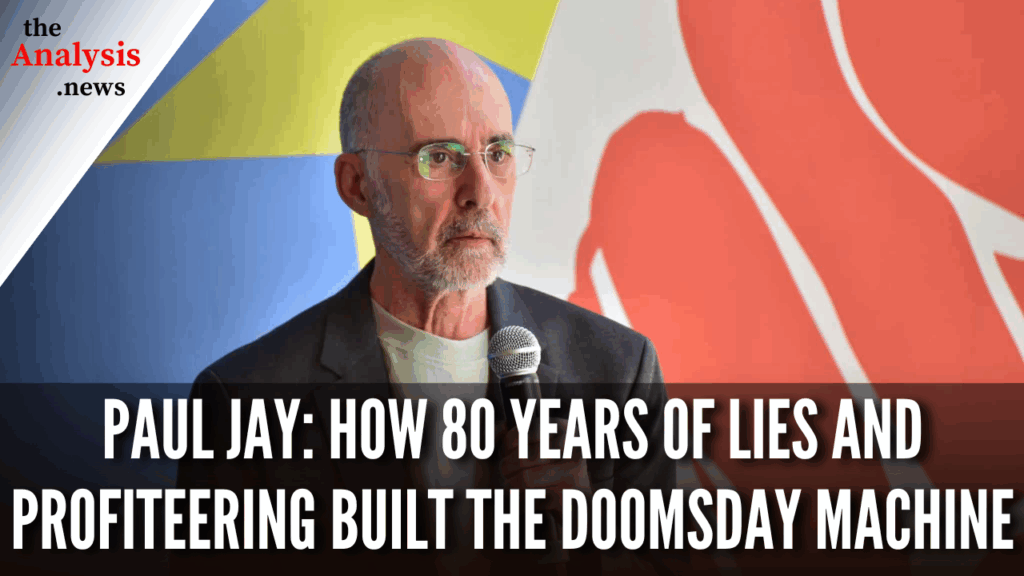
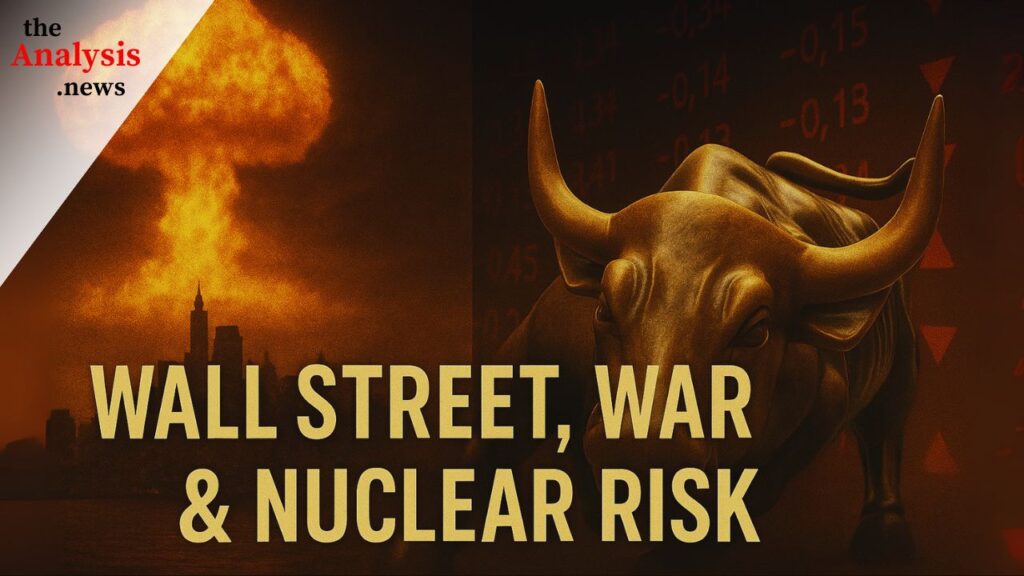
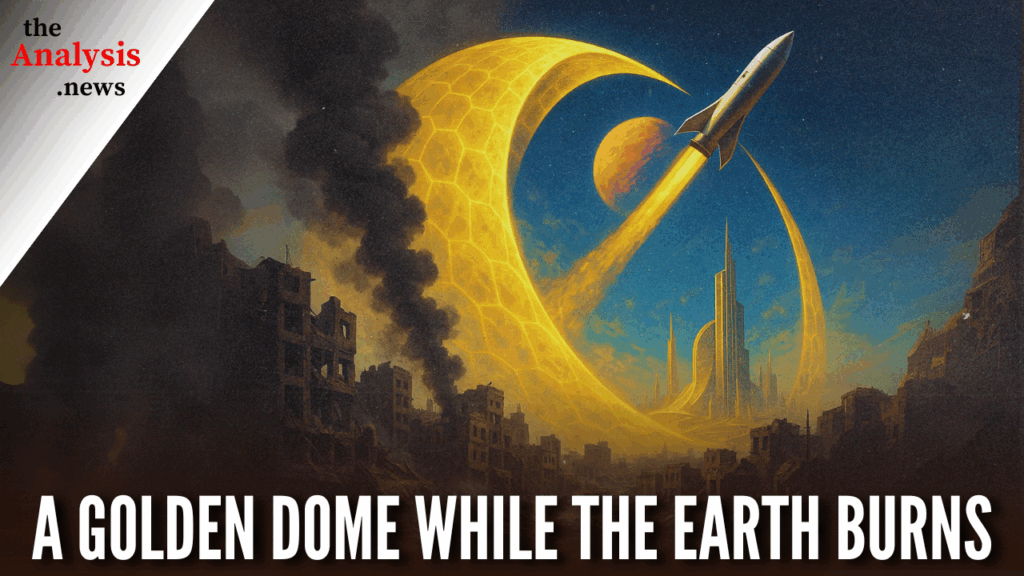
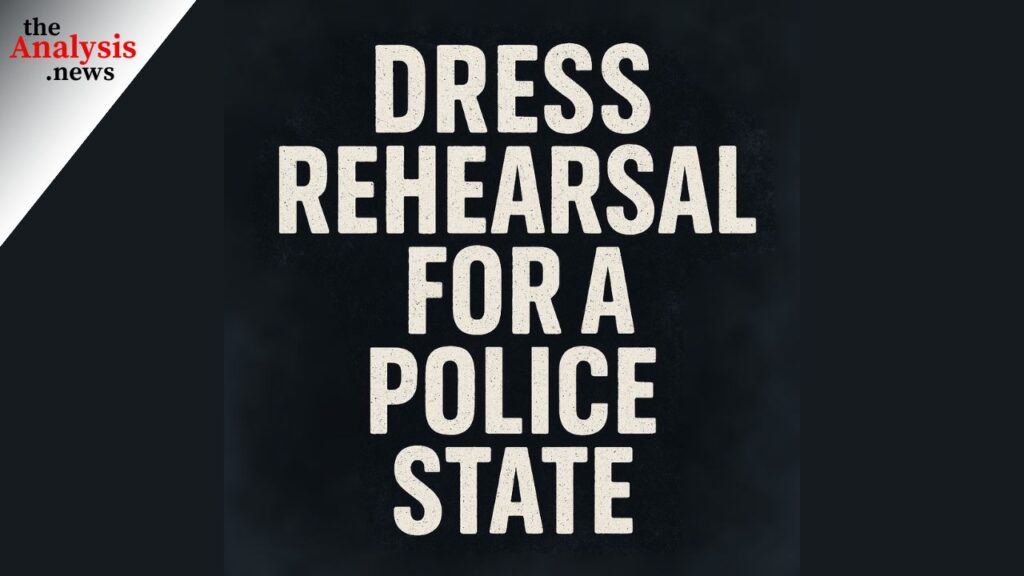
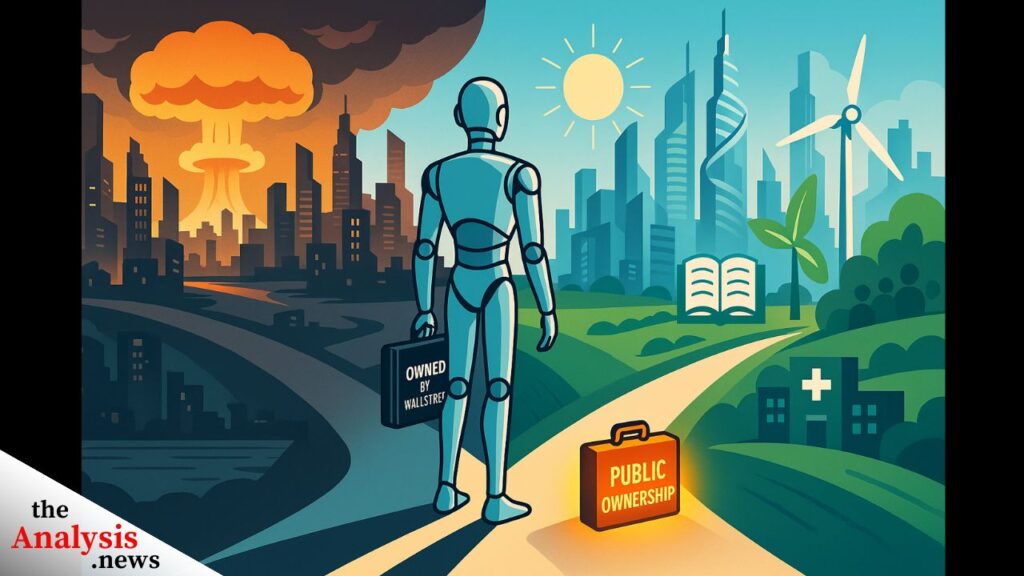

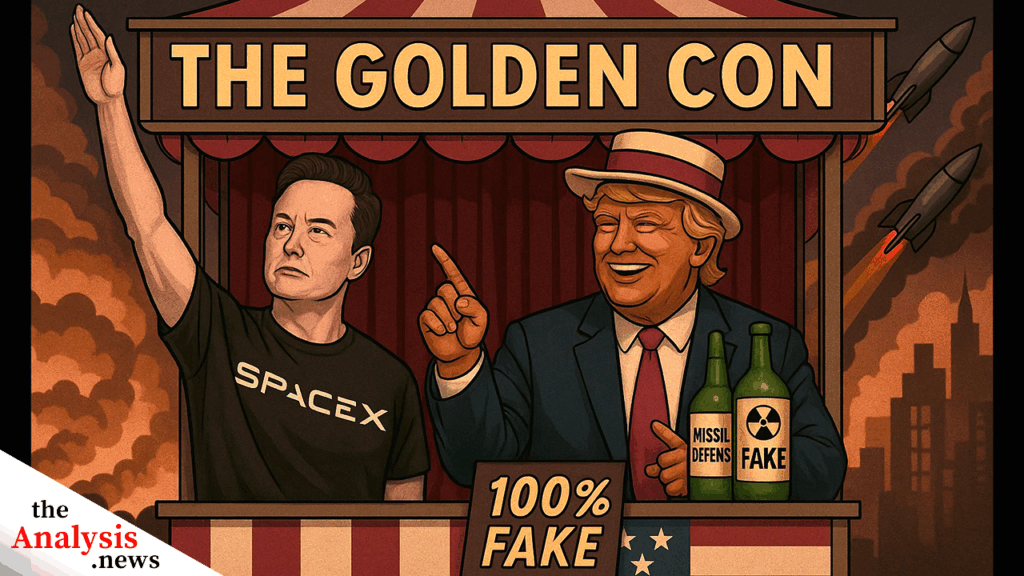
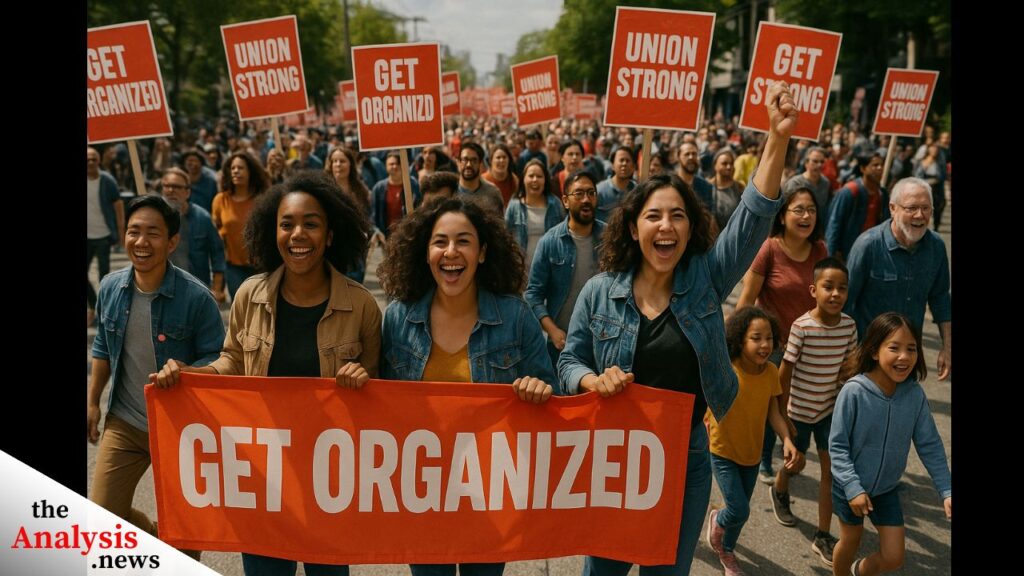
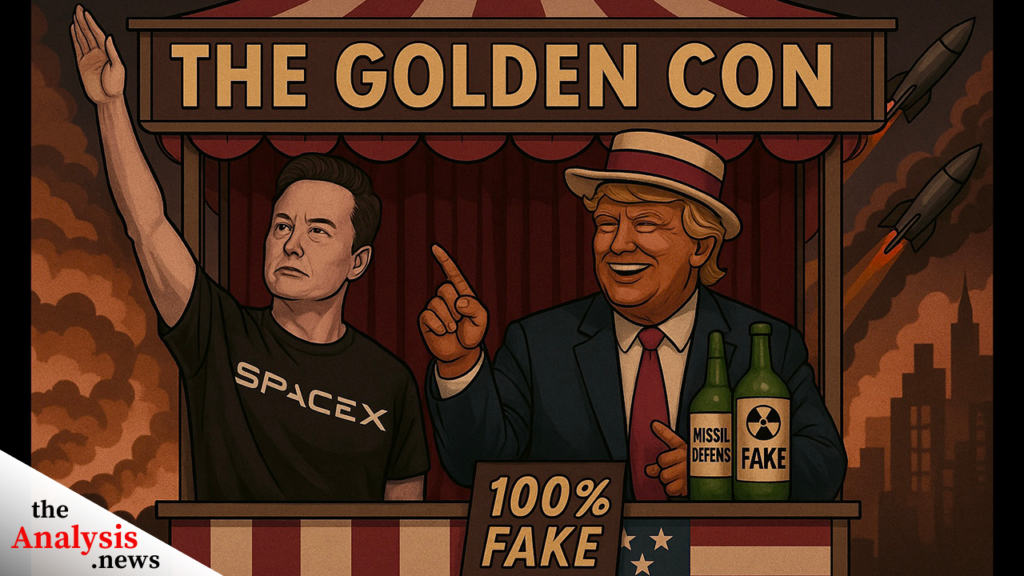
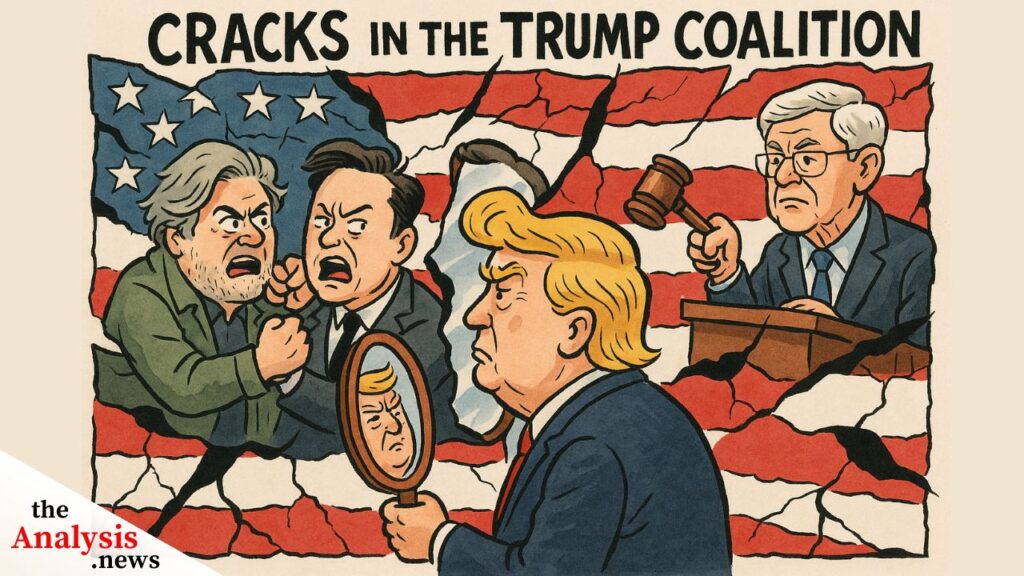

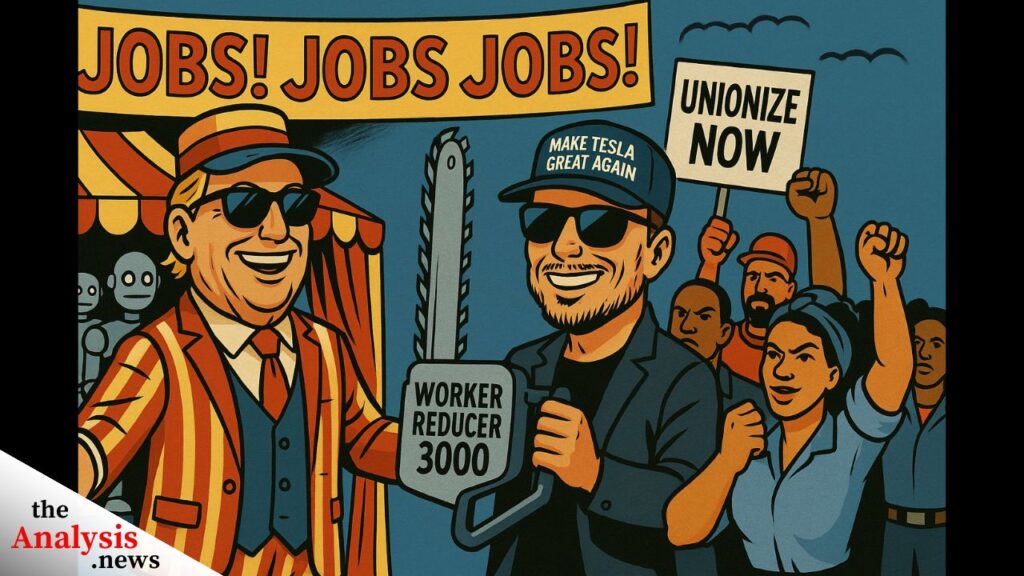
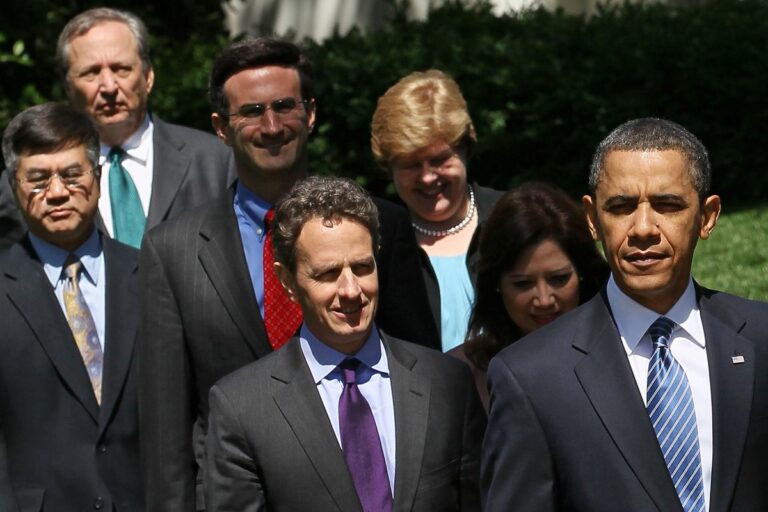
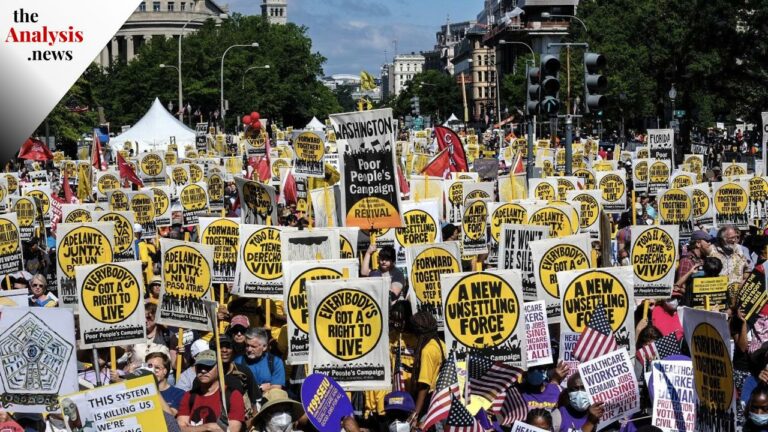
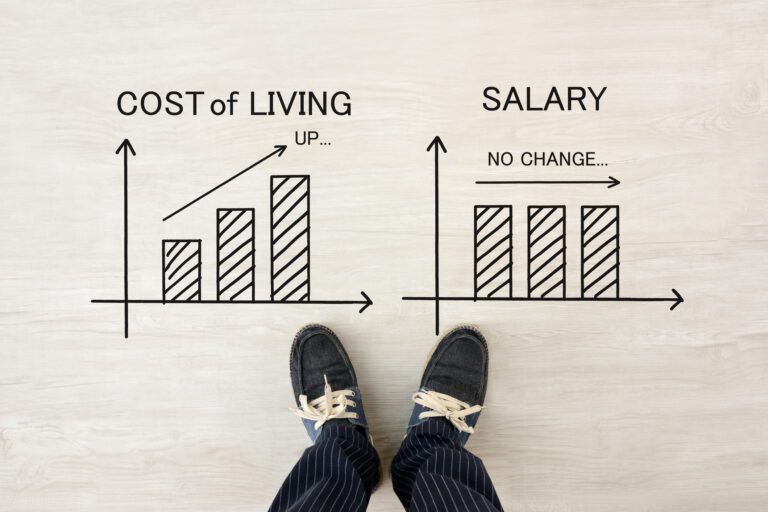
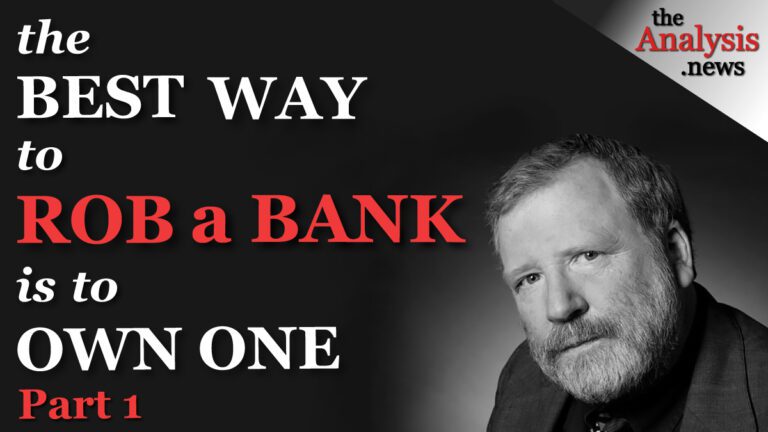
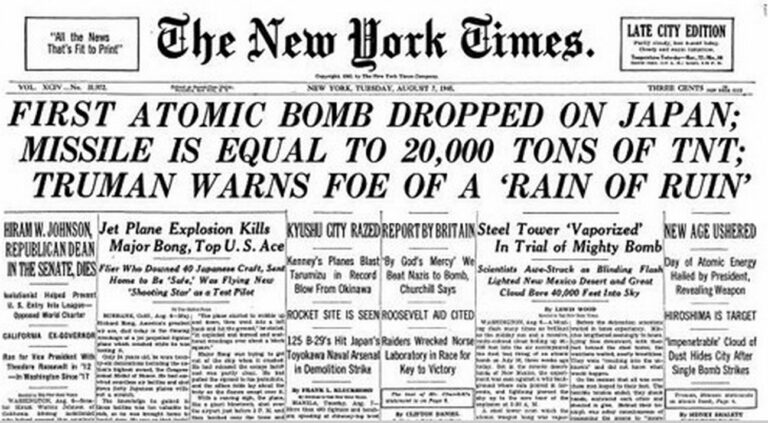
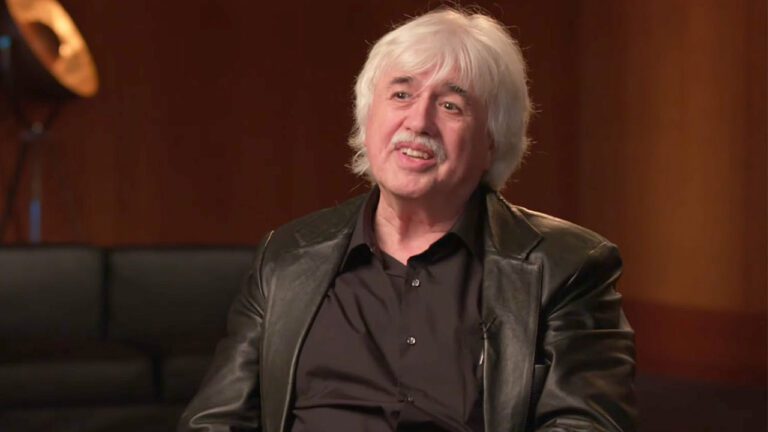
Pelosi is underestimating with the American people; most of us are horrified by her brinkmanshipping trip to Taiwan. If she thinks that it made the Democratic Party “tough,” it didn’t work. It made them look like idiots.
And Xi has just completed the effort to eradicate deep poverty in China. The Chinese people feel very positive about him and the party.
According to Modern Monetary Theory (MMT), having money in hand and nothing to spend it on is the definition of inflation.
Dr Robinson is wrong: the Biden administration has done far more to bring fascism to the US than Trump did, and the underpinnings were begun in the Obama administration.
It seems that even a sociologist can have TDS.
And I’m not a Trump admirer.
Dr Gene Sharp, a pioneer in the study of nonviolent resistance, said in his book From Dictatorship to Democracy that the historic response by a repressive government to a people’s uprising is doubling down on the repression.